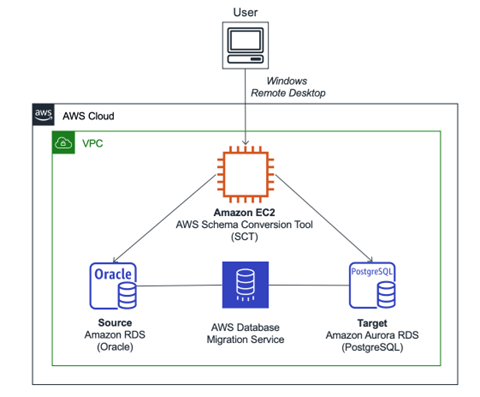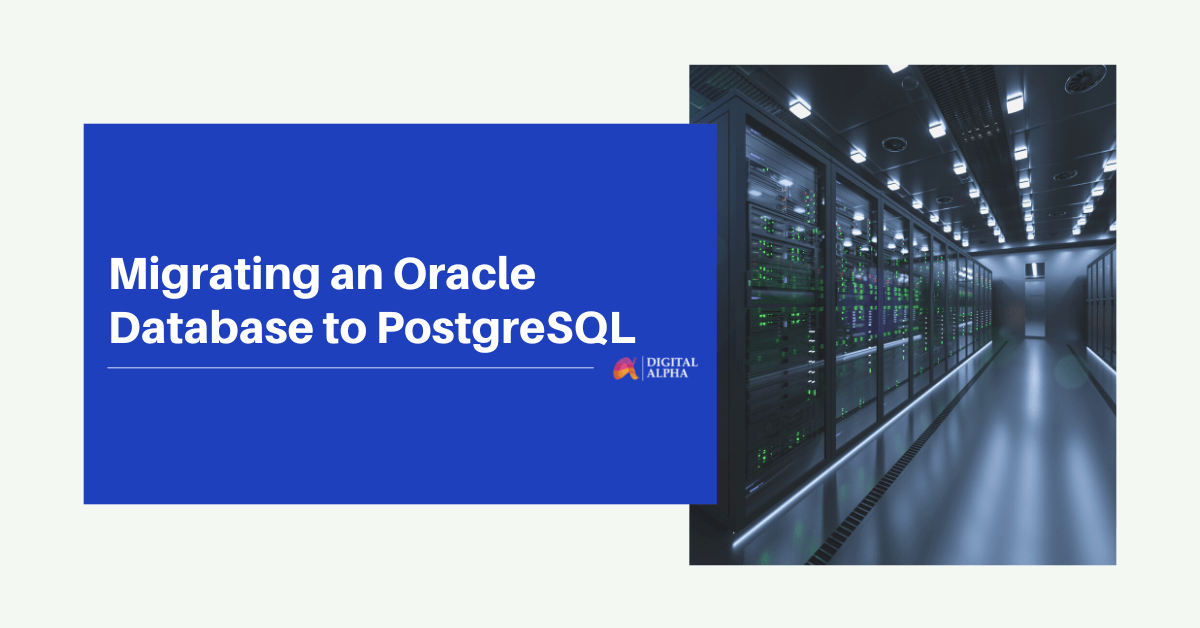Background
A global technology and financial management consultancy decided to modernize its IT infrastructure. Previously the services were run on Oracle, but they struggled with scalability issues, latency, and the ever-increasing cost of licensing. They were looking for a solution to help them transition to a modern architecture with a new database.
Businesses are increasingly moving away from using on-premises servers supporting Oracle databases. The firm had to address whether to replace the hardware or migrate the database to the cloud. The costs of replacing the servers are significantly high. Plus, managing the database is an added expense, which takes time. Also, they needed to send resources to check on the servers at a collocation site every fortnight.
Database migration is a complex, multiphase process, which usually includes assessment, database schema conversion (to change engines), script conversion, data migration, functional testing, performance tuning, and many other steps. Tools like the AWS Database Migration Service (AWS DMS) and AWS Schema Conversion Tool (AWS SCT), native engine tools, and others can help automate some phases of the database migration process.
Migrating to the cloud is an ever-evolving journey. To remain focused on the innovations, it is critical to leverage AWS’s managed services for the future migration journey.
Challenges
The firm was experiencing exponential data growth year-over-year. There were significant challenges in dealing with the huge data generated for business decision-making.
- Licensing & Costs: The exorbitant licensing costs and restraints made it extremely difficult for the firm to run workloads on Oracle. Not only licensing fees but Oracle support is also expensive, and the older the system and its infrastructure get, the more expensive it becomes.
- Audit and Compliance: Oracle reserves the right to audit and charge customers who have fallen out of compliance.
- Scalability: Scaling databases and the hardware infrastructure to keep up with huge workloads becomes challenging as the workloads are not suitable for non-relational data stores.
- IT Support Additional IT resources are needed for the maintenance of the hardware. Managing and upgrading on-premise infrastructure is time-consuming and labor-intensive work.
They decided to migrate the data for its flagship financial products from a legacy Oracle Exadata environment to an Amazon Web Services (AWS) database quickly and securely, leveraging AWS Database Migration Service (AWS DMS).
Solution
The firm partnered with Digital Alpha to build a solution that enables them to easily overcome the challenges. They moved their account data to Amazon Aurora, a relational database designed for the cloud that is compatible with MySQL and PostgreSQL, in less than 16 months. The reason for moving to Postgres was primarily to opt for a managed database that enables them to achieve higher availability, cost efficiency, upgraded performance, and the ability to scale without worrying about licensing and maintenance issues.
The firm chose to move from Oracle to Amazon Elastic Compute Cloud (Amazon EC2)— which provides secure and resizable compute capacity to Amazon Aurora for PostgreSQL using AWS Database Migration Service (DMS) and Schema Conversion Tool (SCT).
The tech team can now focus on innovation and building solutions that have more business value.

Benefits
When migrating Oracle Database applications to AWS, many opportunities exist to modernize and optimize the architecture. This migration provides increased agility and flexibility, as well as the potential to migrate to a fully managed service, such as Amazon Relational Database Service (Amazon RDS) for Oracle or Amazon Aurora PostgreSQL. Aurora PostgreSQL is a drop-in replacement for PostgreSQL. It makes it simple and cost-effective to set up, operate, and scale your new and existing PostgreSQL deployments. It also helps relieve DBAs and other IT staff of many traditional aspects of Oracle Database infrastructure administration, allowing them to focus on application aspects that have more value to the business.
Businesses have major advantages of using AWS :
- Maintained 99.9% uptime
- Achieved cost savings by almost 65%
- Reduced database CPU usage by close to 40%
- Increased performance and stability
- Reduced latency
- Ability to scale millions of transactions per second with PostgresSQL
- PostgreSQL offers free security authentications like Host, LDAP, PAM, etc., and role-based access control.
